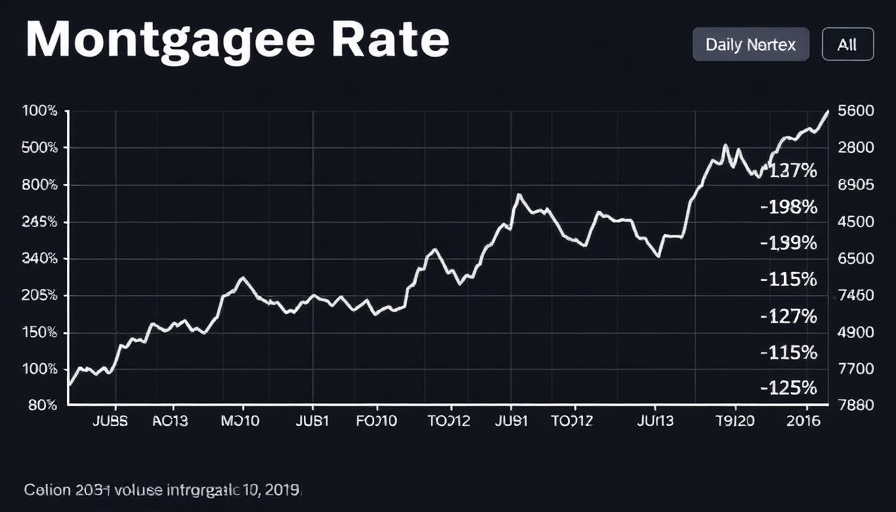
The Mortgage Rate Landscape: Stability with an Upcoming Shift
The week ending August 29, 2025, has demonstrated remarkable stability in mortgage rates, with the average top-tier 30-year fixed rate holding steady at 6.50%. Such consistency, where the rate fluctuated by no more than 0.02% daily, is a welcomed reprieve for many prospective borrowers and industry professionals alike. The absence of significant volatility in conjunction with the lowest rates seen in over ten months created an ideal environment for both sides of the transaction.
The Importance of Economic Reports
However, as we move into the following week, this calm will be tested. Investors and homeowners alike should prepare for significant changes as key economic reports are set to release starting Tuesday. With Monday being a federal holiday, the economic calendar will kick off with a series of relevant data that could influence market perception and investor sentiment profoundly. In particular, Friday's jobs report is anticipated to be a crucial driver, given its recent role in steering rates down to current lows.
What to Expect: Heightened Volatility Ahead
Industry experts are advising cautious optimism. As Robert Anderson notes, the events that shaped the market this past week have paved the way for a turbulent environment where unpredictability reigns. Borrowers could witness a significant shift in rate quotations following the release of the jobs report, which serves as a barometer for the overall economic health. Should the report indicate a stronger-than-expected labor market, it could propel rates upward, disrupting the current equilibrium.
Implications for Borrowers
For mortgage applicants, this week presents a dual-edged sword. While the current rates are favorable, the potential for increased rates should serve as an impetus to secure financing sooner rather than later. Those in the market should weigh their options carefully, potentially locking in favorable terms amidst a backdrop of impending market shifts. Additionally, professionals in the industry must remain vigilant and adapt to the swift changes that could impact their clients’ financial decisions.
Understanding Market Trends: The Bigger Picture
Contextualizing the trends within the broader scope of economic indicators reveals several potential influencing factors. The labor market's health, inflation trends, and the overarching fiscal policies adopted by the Federal Reserve play crucial roles in shaping mortgage rates. By staying attuned to these developments, borrowers and real estate advocates can better navigate financing options as they arise.
Conclusion: Stay Informed and Be Proactive
As we approach a week that promises to be anything but mundane, prospective borrowers are encouraged to remain informed. Set alerts, follow market news closely, and consider acting decisively if the economic indicators suggest a potential rise in mortgage rates. Taking proactive steps now could yield significant savings in the long run.
 Add Row
Add Row  Add
Add 




Write A Comment